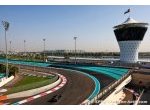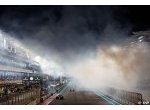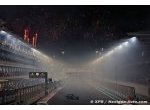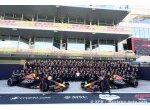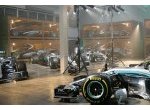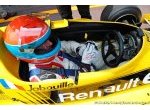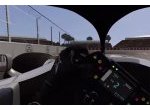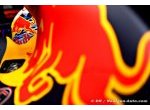Q&A with Andrew Green - Force India Technical Director
"The differences are not just on the surface"
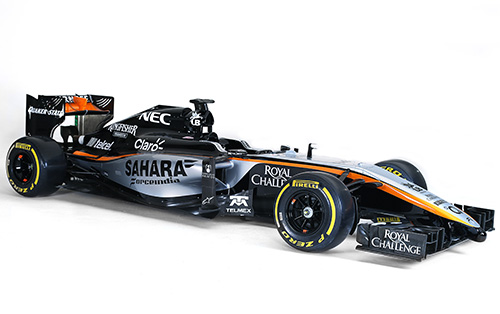
Andrew, now that the VJM08 has been unveiled, how would you sum up its new look?
The most significant changes from the outside are at the front of the car in order to conform to the new 2015 technical regulations. With the lowering of the front of the chassis and nose, the front of the car looks very different from what we had developed previously. It is a redesign that involved a lot of work over the winter, as the new regulations caused a loss in terms of downforce and we’ve been working to claw back all that performance. There are also some more subtle changes, like a modified sculpting of the sidepods and new cooling intakes.
The differences are not just on the surface. Underneath the skin there is a completely new rear suspension layout with a new hydro-mechanical system replacing the original torsion springs. This will allow us to explore new setup configurations for the rear of the car and will allow set up changes to be made much more quickly in the garage. Put simply it’s another tool for our engineers to use trackside during race weekends.
The second year in a new rules era is always crucial: what has been the philosophy in designing the new car?
The challenges we had to face were very different compared to 2014. Obviously, last year we had a completely new power unit and technical regulations so there was a huge amount of work going into just getting the car to the first race. This year, our focus is mostly on refining and developing the package we had in 2014. We are looking forward to building on what we learnt in 2014 about the VJM07: we understood the car’s strengths and weaknesses and we aim to build on the former and fix the latter. This has been the goal for building the VJM08.
How will the shift to the Toyota wind tunnel affect the development of the 2015 car?
Working solely in the TMG wind tunnel will help our development significantly: having the ability to run 60% models will represent a significant step forward in fidelity of the data we receive and will in turn improve our correlation between the wind tunnel results and the on-track car data. The model itself has a significant increase in aerodynamic loading and it’s a challenge designing and building a new model in a very short time frame. We are very much looking forward to our starting to use the new facilities in January. For this reason we have delayed the track testing of the VJM08 until the Barcelona test.
The tunnel, however, is not the only course we are taking to improve our performance. We are also looking to step up our simulator programme in order to deliver a ‘state of the art’ tool that will help us develop more in the virtual world and allow us to explore new directions and developments. The combination of the new wind tunnel and simulator will also be aided by the ramping up of our CFD capabilities; we are now operating with 30 teraflops of computing power - a massive change compared to the 0.3 teraflops we had five years ago. We expect the fruits of this investment to start feeding into the development of the car throughout the 2015 season and beyond.
Of course, these improvements wouldn’t be of any use without the right people making sense of the enormous amount of data. We are always looking to strengthen our engineering team and we have quite a few new starters joining us this season - new additions who will bolster our engineering capabilities.
The decrease of available power units to four per season has been a talking point during the winter. What impact do you expect it to have on the season?
I don’t expect that to be an issue. We effectively ran four power units only on Nico’s car last season, as the fifth only did 17 laps in Austin. We are confident Mercedes HPP will deliver a competitive engine, as they did in 2014, and in that respect and we are looking forward to running with the new spec power units. Our working relationship with Mercedes-Benz is now in its seventh year and I am looking forward to strengthening our links with them: just as with our driver line-up, consistency is a prized asset in Formula One.
What else can we expect from 2015? Are there any other changes that played a part in the creation of the VJM08?
There are some subtle construction changes on the Pirelli tyres that will affect the rear of the car and we will look to examine these differences on track throughout the winter in order to establish any new setup variations resulting from them.
As the minimum weight limit has gone up significantly we don’t anticipate having any issues with hitting the minimum weight limit. This regulation change has given us more flexibility in some of our designs and also allows us to run comfortably between the two weight distribution limits.
There are also a few new partnerships which will bring advantages to the VJM08. We are looking forward to running Koni dampers in 2015. We worked previously with their technology in 2009 and it was important to us that we created a technical partnership in this area in order to have access to their damping technology expertise.
We enter our second season with Motegi Racing and, after a successful first season we are in the process of developing new wheel rim designs for 2015. We anticipate these updates will arrive early in the season and should represent a good step forward in capability.
Throughout 2015, we will be looking forward to bringing updates to the car from start to finish; the first significant package should be at the beginning of the European season and it will be the first batch of upgrades based solely on the work done at the new wind tunnel.
